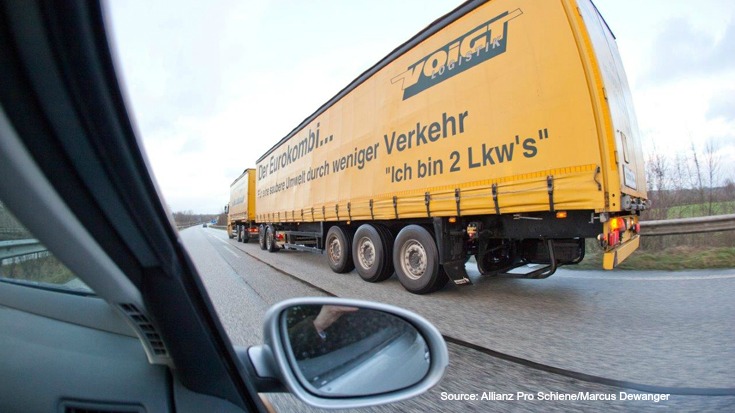
Germany quietly legalises megatrucks, prompting government row
Germany’s transport minister Alexander Dobrindt used the Christmas break to silently legalise the use of megatrucks. Also known as gigaliners, the combination vehicles are up to 25.25m long can weigh up to 60 tonnes. But state secretary at the environment ministry, Jochen Flasbarth, is vocally opposing the move, saying megatrucks’ impact on the environment and on rail transport had not yet been sufficiently examined. He added that the decision is incompatible with EU law.
Interested in this kind of news?
Receive them directly in your inbox. Delivered once a week.
Currently megatrucks are permitted in Sweden, Finland, Denmark and the Netherlands but Belgium, Spain and Germany are running tests with the vehicles too. The EU decided in 2014 that cross-border or international use of longer and heavier vehicles would remain forbidden.
Proponents of megatrucks claim bigger trucks will be good for the environment and road safety. However, studies suggest the main effect of wider spread use of megatrucks would to be make truck transport cheaper. This would lead to growing demand for road freight and undermine efforts to shift goods from road to rail. Due to their weight and size and the difficulty of manoeuvring bigger vehicles, their use could also have negative safety impacts. Public opinion is strongly opposed to megatrucks. A 2014 survey suggested 79% of Germans oppose megatrucks.
T&E rail freight officer Samuel Kenny said: ‘Megatrucks aren’t green, they’re just a supersized distraction from the real challenge, which is to make trucks greener and use them more efficiently. With 25% of trucks driving around empty, bigger trucks really aren’t the solution. And, of course, we’re not going to shift any freight to rail by making road even cheaper than it already is.’
The environmental and safety impact of megatrucks is also highly dependent on the rules that govern their use. If megatruck drivers are well-trained, the vehicles are weight limited and external costs are covered by a surcharge on the toll, the negative impacts could be limited. Most countries have introduced certain restrictions for megatrucks such as routes or weight limits (44 tonnes in Germany for example), but there are no European rules on this. The EU’s tolling directive also does not allow higher tolls for megatrucks.
Samuel Kenny concluded: ‘The truth is that we need better trucks, not bigger trucks but if some countries want to push ahead with megatrucks, we need to limit the damage. That means we need tough new safety requirements and CO2 standards for trucks as well as an update of the EU’s tolling law to require higher road charges for megatrucks.’
